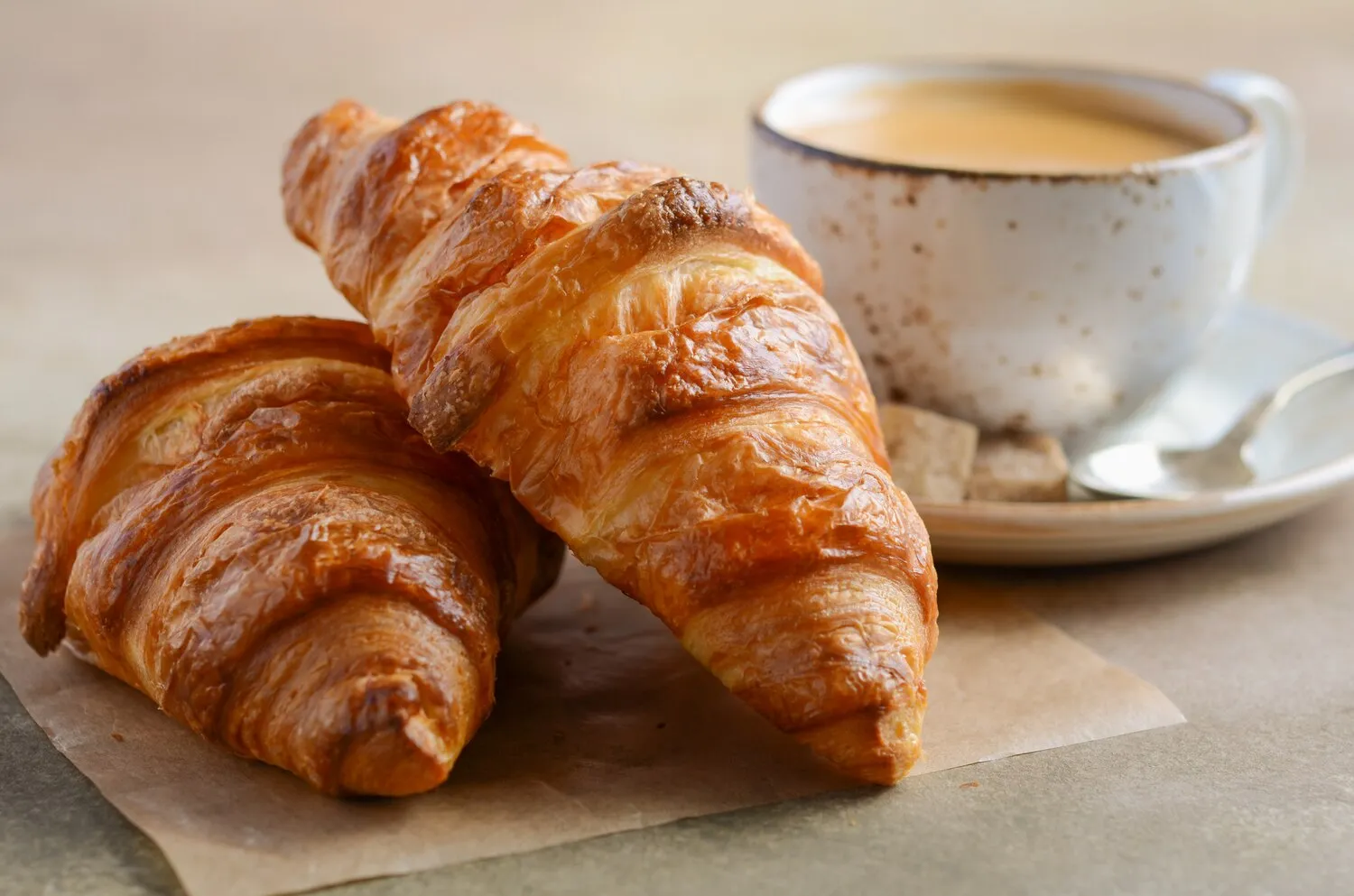
Croissant
Flaky and buttery classic French pastry.
Nutrition Facts
* The % Daily Value (DV) tells you how much a nutrient in a serving of food contributes to a daily diet. 2,000 calories a day is used for general nutrition advice.
Le Pont Patisserie
While often considered quintessentially French, the croissant's ancestor is the Austrian 'kipferl.' It is believed that the kipferl was introduced to France by Austrian baker August Zang in the 19th century, who opened a Viennese bakery in Paris. The modern, layered croissant as we know it developed later, likely through improvements on the original kipferl recipe.
The croissant is deeply ingrained in French breakfast culture and is a common sight in bakeries and cafes across the country. It's often enjoyed with coffee or hot chocolate and is seen as a symbol of French pastry expertise.
Breakfast Staple
In France, the croissant is a common breakfast food, often enjoyed alongside coffee or hot chocolate. It's a quick and easy way to start the day.
Bakery Culture
French bakeries (boulangeries and patisseries) proudly display their croissants, and their quality is often a point of pride and competition.
Symbol of French Gastronomy
The croissant has become an internationally recognized symbol of French baking and culinary traditions, representing a certain level of quality and sophistication.
The croissant is characterized by its rich, buttery flavor and flaky texture. The taste is a balance of savory and subtly sweet notes.
The primary flavors come from the high butter content used in the laminated dough. This butter creates layers of flavor and contributes to the characteristic flaky texture. There's also a subtle sweetness from the dough itself, often enhanced with a touch of sugar. High-quality croissants should taste predominantly of butter and possess a slightly yeasty, fermented flavor.
Butter Temperature
Keep the butter cold but pliable during lamination. Too cold and it will break; too warm and it will melt into the dough.
Lamination Technique
Precise folding and rolling are essential for creating distinct layers. Avoid overworking the dough.
Proofing Time
Allow the croissants to proof properly to achieve a light and airy texture. Over-proofing can lead to collapse during baking.
Baking Temperature
Bake at a high temperature initially to create steam and encourage flakiness, then reduce the temperature to ensure the inside is cooked through.
Explore additional Pastry dishes and restaurants
Explore PastryDiscover top dining spots and culinary experiences in West Vancouver.
Explore West VancouverLearn more about the food culture, restaurant scene, and culinary heritage of Canada.
Explore Canada
